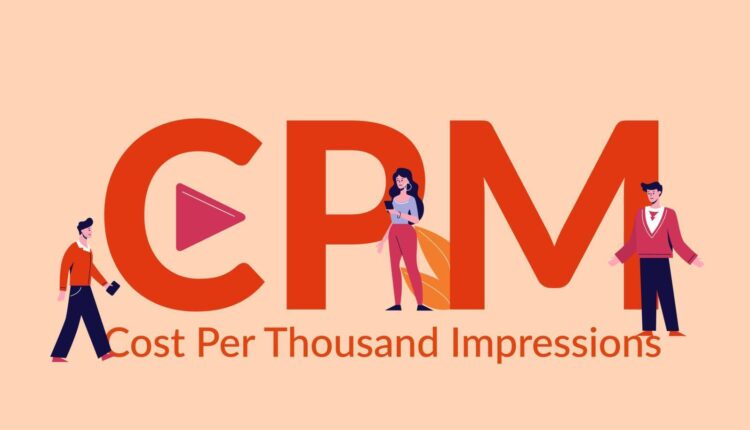In the digital advertising landscape, various metrics help advertisers and publishers evaluate the effectiveness of their campaigns. One such metric is qCPM, which stands for Quality Cost Per Thousand Impressions. This metric provides a nuanced view of ad performance by considering not just the revenue but also the quality of the impressions. In this article, we’ll explore what qCPM is, why it matters, how it’s calculated, as well as how to improve it.
What is qCPM (Quality Cost Per Thousand Impressions)?
qCPM, or Quality Cost Per Thousand Impressions, measures the cost of acquiring high-quality ad impressions. Unlike traditional CPM (Cost Per Thousand Impressions), which only considers the cost of delivering ads, qCPM incorporates factors that reflect the quality of those impressions. This quality-focused metric helps advertisers and publishers assess the value of their ad placements beyond just raw cost.
Why qCPM Matters
1. For Advertisers
For advertisers, qCPM provides insight into the value and effectiveness of their ad spend. High-quality impressions are more likely to lead to better engagement and conversions, therefore making qCPM a useful metric for evaluating how well ad dollars are being spent.
2. For Publishers
Publishers benefit from qCPM as it helps them understand the value of their inventory. By focusing on the quality of impressions rather than just the quantity, publishers can better optimize their ad space and attract higher-paying advertisers.
How is Quality Cost Per Thousand Impressions Calculated?
Calculating qCPM involves a few additional steps compared to traditional CPM. Here’s a simplified formula for qCPM:
qCPM = (Total Quality Revenue/Total Quality Impressions) x 1000
1. Example Calculation
Let’s say a publisher earns $1,000 from 200,000 high-quality impressions. To calculate qCPM:
qCPM = (1000/200000) x 1000 = $5
This means the publisher earns $5 for every thousand high-quality impressions.
Factors Influencing Quality Cost Per Thousand Impressions
Several factors affect qCPM, including:
1. Ad Quality
The quality of ads displayed can significantly impact qCPM. High-quality ads that are relevant and engaging tend to generate better results, leading to higher qCPM.
2. Audience Relevance
Impressions served to a well-targeted audience are considered high quality. Effective targeting ensures that ads are shown to users who are more likely to engage, thus resulting in a higher qCPM.
3. Ad Placement
Where ads are placed on a webpage or app affects their quality. Ads placed in prominent positions where they are more likely to be seen and interacted with indeed have higher qCPM.
4. Ad Format
Different ad formats can impact qCPM. For instance, interactive and visually appealing formats like video ads often achieve higher qCPMs compared to static display ads.
Strategies to Improve qCPM
1. Focus on Ad Quality
Ensure that the ads displayed are of high quality and relevant to the audience. Collaborate with advertisers in order to deliver engaging and well-designed ad content.
2. Enhance Audience Targeting
Use data-driven strategies in order to refine audience targeting. The more accurately ads are targeted to users’ interests and behaviors, indeed the higher the quality of impressions and qCPM.
3. Optimize Ad Placement
Experiment with different ad placements in order to find the most effective positions. Ads placed in high-visibility areas tend to have better engagement, therefore contributing to a higher qCPM.
4. Utilize Advanced Ad Formats
Incorporate advanced ad formats such as video, interactive, or native ads that offer a richer user experience. These formats generally yield higher engagement and better qCPM.
5. Monitor and Analyze Performance
Regularly monitor qCPM and other performance metrics to identify trends as well as areas for improvement. Use analytics to understand what drives high-quality impressions and adjust strategies accordingly.
Common Misconceptions About Quality Cost Per Thousand Impressions
1. qCPM is the Same as CPM
While both qCPM and CPM measure cost per thousand impressions, qCPM focuses on the quality of those impressions. CPM is concerned only with the cost of delivering ads, without considering their effectiveness or engagement.
2. Higher Traffic Always Leads to Higher qCPM
Higher traffic doesn’t automatically result in higher qCPM. The quality of the impressions, audience targeting, as well as ad relevance play more critical roles in determining qCPM.
3. qCPM is Only Relevant for High-Volume Publishers
qCPM is valuable for both high-volume publishers and those with smaller audiences. Understanding and optimizing qCPM can help any publisher improve ad revenue and deliver better value to advertisers.
Conclusion

qCPM is indeed a crucial metric in digital advertising that helps assess the quality of ad impressions and the value of ad spend. By focusing on high-quality ads, precise audience targeting, and effective ad placements, advertisers and publishers can optimize their qCPM and enhance their overall ad performance. Understanding and leveraging qCPM provides a more comprehensive view of ad effectiveness, thus leading to better decision-making and improved revenue outcomes.
FAQs About Quality Cost Per Thousand Impressions (qCPM)
1. What is qCPM?
qCPM stands for Quality Cost Per Thousand Impressions. It measures the cost of acquiring high-quality ad impressions.
2. How is qCPM different from CPM?
Unlike CPM, which only considers the cost of delivering ads, qCPM factors in the quality of the impressions.
3. What factors affect qCPM?
Factors influencing qCPM include ad quality, audience relevance, ad placement, as well as ad format.


